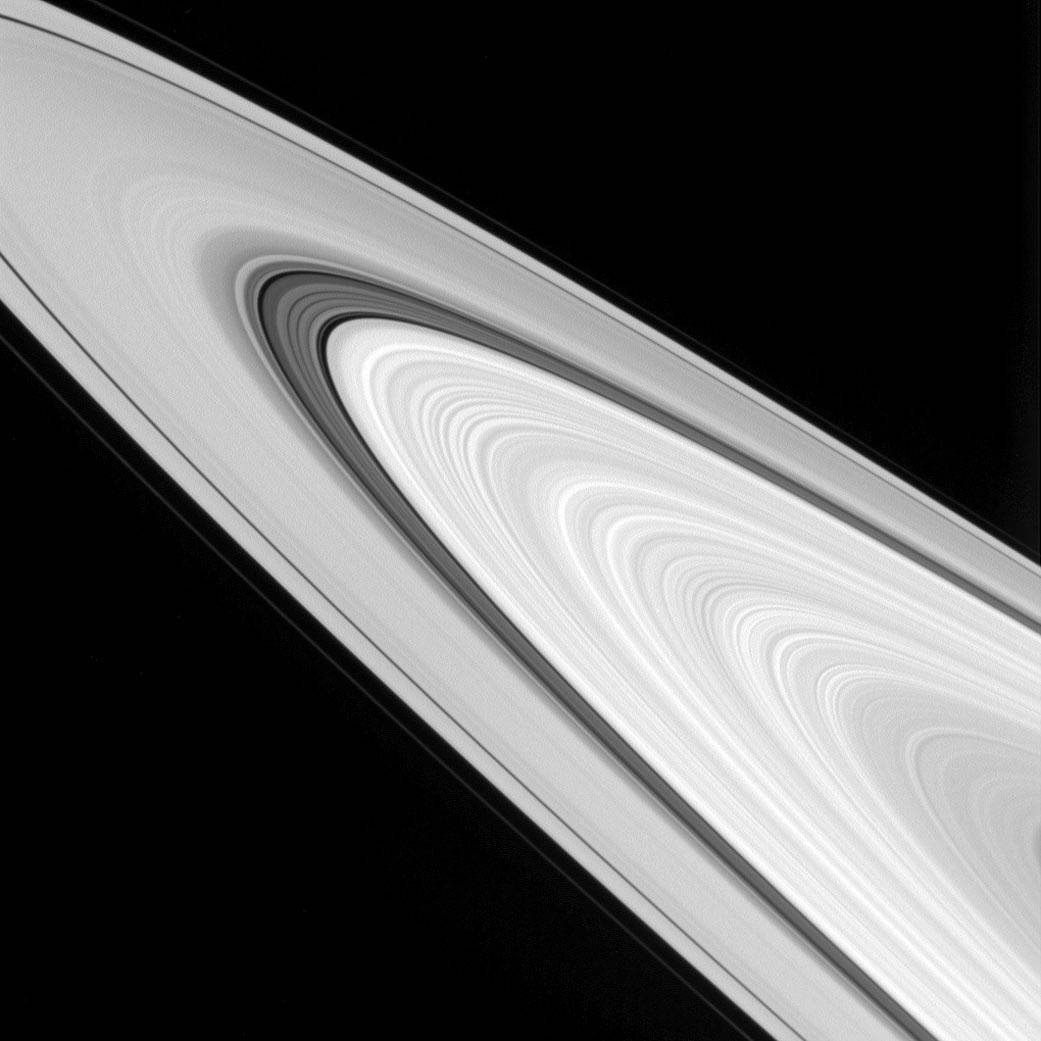
The intricate structure of Saturn's iconic rings is revealed in amazing detail in a stunning new photo by NASA's Cassini spacecraft.
Dozens and dozens of individual ringlets are visible in the photo, which Cassini captured on Sept. 24, 2016, when the probe was about 283,000 miles (456,000 kilometers) from Saturn and positioned 4 degrees above the ring plane.
These ringlets display quite a bit of variation, and it's unclear exactly why, NASA officials said. [See More Photos of Saturn's Glorious Rings]
"Ring scientists are debating the nature of these features — whether they have always appeared this way, or if their appearance has evolved over time," NASA officials wrote in a description of the new photo, which was released Monday (Nov. 7).
Saturn's rings are composed of 90 to 95 percent water ice. Scientists aren't sure where the rings originally came from, and theories abound. For example, some researchers think that the rings are remnants of an icy moon that was torn apart by Saturn's gravity, while others hypothesize that they're made up of material left over after the planet formed.
And recently, a team of astronomers hypothesized that the rings may be pieces of dwarf planets that strayed too close to the giant planet four billion years ago, during a chaotic period known as the Late Heavy Bombardment.
Cassini launched in 1997 and arrived in the Saturn system in 2004. The spacecraft will continue studying the ringed planet and its many moons through September 2017, when Cassini will perform an intentional death dive into Saturn's thick atmosphere.
Get the Space.com Newsletter
Breaking space news, the latest updates on rocket launches, skywatching events and more!
The Cassini spacecraft also carried a piggyback lander called Huygens, which in January 2005 made the first-ever landing on Titan, Saturn's largest moon.
The $3.2 billion Cassini-Huygens mission is a collaboration involving NASA, the European Space Agency and the Italian Space Agency.
Follow Mike Wall on Twitter @michaeldwall and Google+. Follow us @Spacedotcom, Facebook or Google+. Originally published on Space.com.
Join our Space Forums to keep talking space on the latest missions, night sky and more! And if you have a news tip, correction or comment, let us know at: community@space.com.

Michael Wall is a Senior Space Writer with Space.com and joined the team in 2010. He primarily covers exoplanets, spaceflight and military space, but has been known to dabble in the space art beat. His book about the search for alien life, "Out There," was published on Nov. 13, 2018. Before becoming a science writer, Michael worked as a herpetologist and wildlife biologist. He has a Ph.D. in evolutionary biology from the University of Sydney, Australia, a bachelor's degree from the University of Arizona, and a graduate certificate in science writing from the University of California, Santa Cruz. To find out what his latest project is, you can follow Michael on Twitter.









